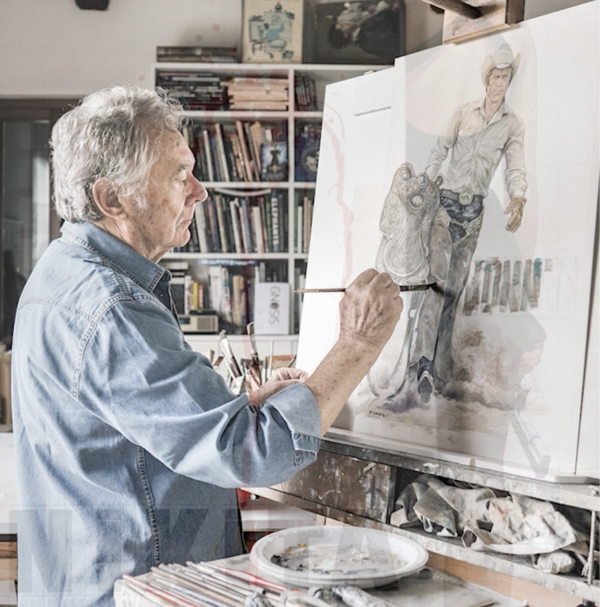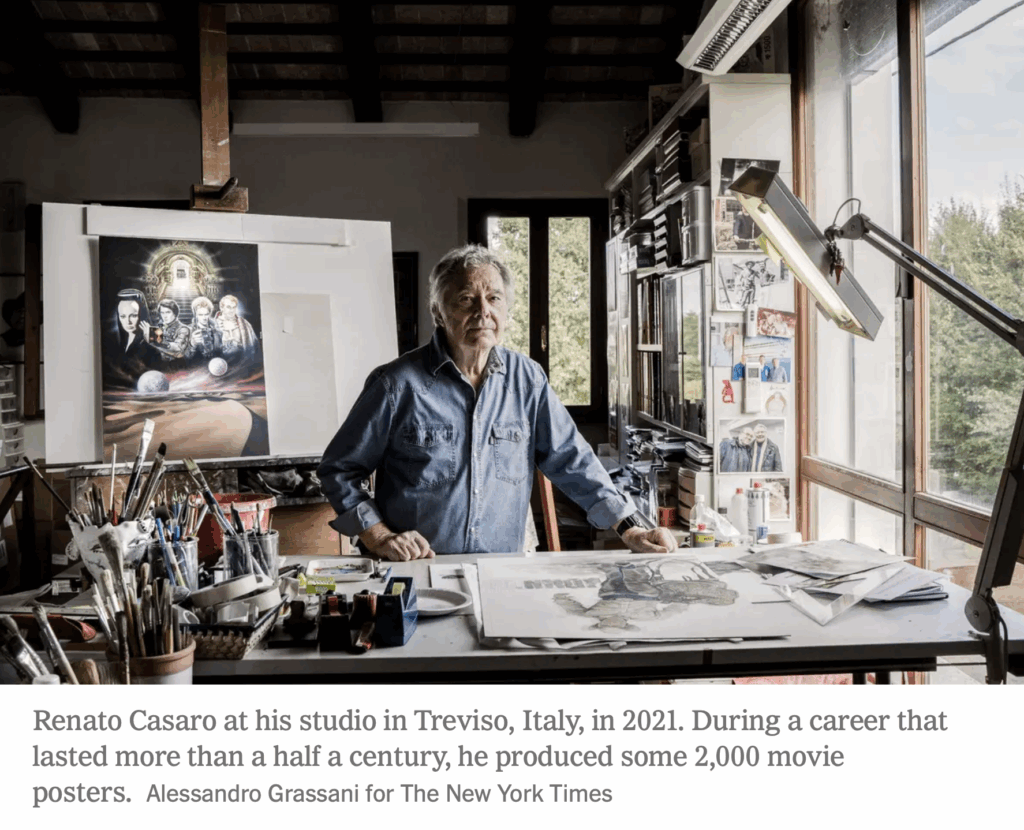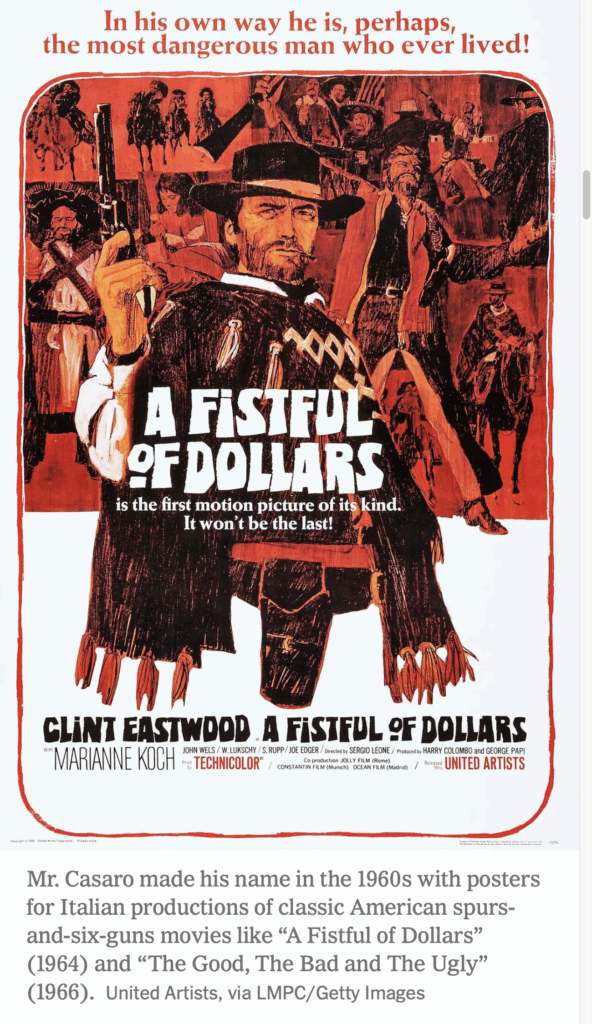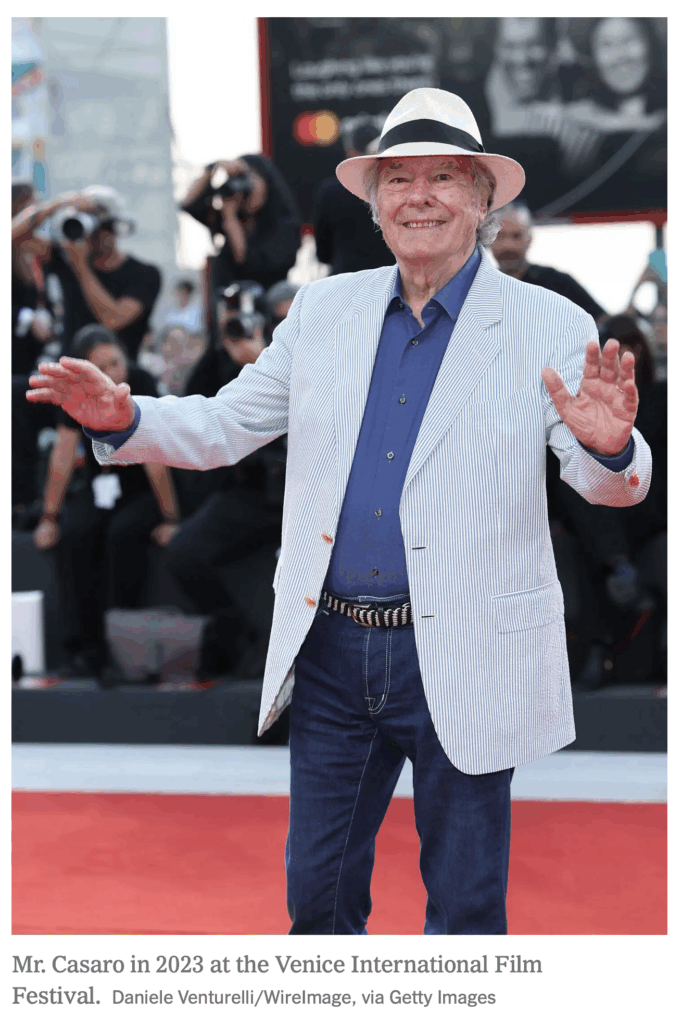
Posters – What They Are & What They Do
A rich and accessible art form, Walter Film’s collection of pictural posters charts global concerns, popular tastes and artistic and technological developments across two centuries.
A Short History of the Poster
A 1476 Birth
The process of posting hand-drawn public notices can be traced back to antiquity. One of the earliest known examples of printed advertising in Britain dates from 1477 – a small dark block of text advertising a handbook for priests in Salisbury, south-west England. The advert was printed by William Caxton, who introduced the printing press to Britain and was the first person in the country to make a living printing and selling books, having opened a shop near Westminster Abbey in 1476.
By the 19th century, text-heavy posters printed from woodblocks were commonplace, but the rise of the colorful, pictorial poster didn’t come about until the middle of that century, following significant advances in printing techniques.From then on, the evolution of the poster moved from decade to decade that included:
From then on, the evolution of the poster moved from decade to decade that included
- the first color lithograph posters in 1866,
- the perfecting of large-scale color printing,
- hand-drawn lettering which led to innovative and original typography and a more unified design.
Toulouse-Lautrecremains the best-known name from this French heyday of the ‘art’ poster.
Then Art Nouveau was abandoned in favor of more angular Art Deco designs, and from this point on poster design marveled at technological and artistic advances that included:
- Russian Constructivists,
- geometric forms in the 1920s,
- poster propaganda, generated during the First World War, spreading through the Communist world, Revolutionary Spain in the 1930s as well as influencing Chinese and Cuban graphic design.
Becoming an essential part of visual communication and advertising as well as a recognized art form.
Renato Casaro, ‘Michelangelo of the Movie Poster‘

Few moviegoers knew his name, but directors like Sergio Leone, Sylvester Stallone and Quentin Tarantino considered his vivid work invaluable.
Renato Casaro, an artist who was called “the Michelangelo of movie posters” and whose work extended from the spaghetti western era of the 1960s through Hollywood blockbusters like the “Rambo” series and “Terminator 2: Judgment Day.”

His career lasted more than a half a century, and produced some 2,000 posters, drawing praise from Hollywood heavyweights like Quentin Tarantino and Sylvester Stallone.
Yet despite his clout within the industry, few moviegoers knew his name. His work was largely unheralded.
A Fist Full of Dollars Brings Success

He also created posters — sometimes alternates or for international releases — for John Huston (“The Bible: In the Beginning,” 1966), Francis Ford Coppola (“The Godfather Part III,” 1990), David Lynch (“Dune,” 1984, and “Wild at Heart,” 1990) and Bernardo Bertolucci (“The Last Emperor,” 1987, and “The Sheltering Sky,” 1990).
A Fishhook Captures an Audience
In Casaro’s view, a good movie poster was like bait on a fishhook. The challenge was to “capture the essential: that moment, that glance, that attitude, that movement that says everything and condenses the entire story.”
When Super Barbarian Is Just The Right Size
His superhuman rendering of Arnold Schwarzenegger in a horned helmet, sword aloft, for “Conan the Barbarian” (1982) and his blood-and-guts rendition of Mr. Stallone, rippling with muscles, for the “Rambo” movies, made them look like gods worthy of Mount Olympus.
“Schwarzenegger was the perfect man to paint,” Mr. Casaro told The Guardian in 2022. “He had a tough expression. His face was like a sculpture.” And Mr. Stallone, he said, “gave me the freedom to interpret all the images of Rambo I had as I wished. All I had to do was make him look like a hero“
In The Beginning
Renato Casaro was born on Oct. 26, 1935, in Treviso, where he got his start in the movie business as a teenager, drawing posters for the Garibaldi Theater in exchange for free admission to movies.
“You learn on the job. You must be able to draw everything, from a portrait to a horse to a lion.”
His big break — creating the poster for Mr. Huston’s sweeping 1966 adaptation of Genesis, starring Richard Harris as Cain and the director as Noah — came through a longtime professional relationship with the Italian film producer Dino De Laurentiis, known for big-budget spectacles.
Other notable posters include
- a bodice-ripper of an image for the steamy 1981 remake of “The Postman Always Rings Twice,” starring Jack Nicholson, Jessica Lange
- a kitchen table; a retro, Hitchcockian collage for the 1981 Brian De Palma thriller “Blow Out,” starring John Travolta and Nancy Allen
- and an action-packed illustration for “Octopussy” that provided a look like an epic on the order of “Lawrence of Arabia.”
During the 1990s, work began to dry up, as the industry turned to Photoshop and other computer software, which made it, as Mr. Casaro pointed out, “very easy to generate a spectacular image, but with no soul.”
Not for nothing did a 2021 retrospective of his work in Treviso bill him as “cinema’s last poster designer.”

Renato Casaro, ‘Michelangelo of Movie Posters’ Dies at 89
The New York Times
View WalterFim Posters
- African American Movie Memorabilia
- African Americana
- Black History
- Celebrating Women’s HistoryI Film
- Celebrity Photographs
- Current Exhibit
- Famous Female Vocalists
- Famous Hollywood Portrait Photographers
- Featured
- Film & Movie Star Photographs
- Film Noir
- Film Scripts
- Hollywood History
- Jazz Singers & Musicians
- LGBTQ Cultural History
- LGBTQ Theater History
- Lobby Cards
- Movie Memorabilia
- Movie Posters
- New York Book Fair
- Pressbooks
- Scene Stills
- Star Power
- Vintage Original Horror Film Photographs
- Vintage Original Movie Scripts & Books
- Vintage Original Publicity Photographs
- Vintage Original Studio Photographs
- WalterFilm

